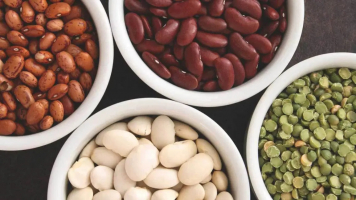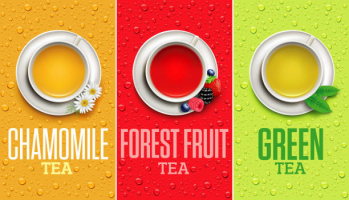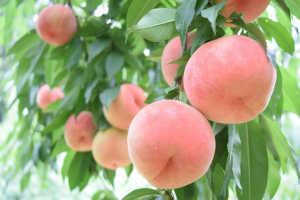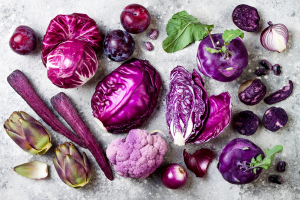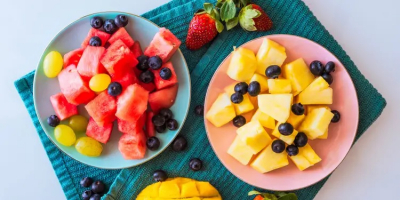Top 9 Delicious Alternatives to Coffee That You Should Try
Many people drink coffee first thing in the morning, but there are plenty of people who don't for a variety of reasons. The high caffeine content (95 mg per ... read more...serving) may make some people jittery and agitated, often known as "the jitters". Others may have headaches and gastrointestinal discomfort from coffee. Many people just don't like the bitter flavor or are tired of their daily cup of coffee. Here are some of the best coffee substitutes you can try.
-
Chicory root may be roasted, ground, and brewed into a delectable hot beverage just like coffee beans. It tastes very much like coffee but contains no caffeine. Additionally, inulin is abundant in it. This soluble fiber encourages the growth of good bacteria, especially Bifidobacteria and Lactobacilli, which may aid in digestion and support a healthy gut. It can also encourage your liver to generate more bile, which can help with fat digestion. Chicory root can be purchased already ground and roasted, making preparation simple. Simply use a filter coffee maker, French press, or espresso machine to brew it like ordinary coffee grounds.
If you want a different ratio, use 2 teaspoons of grinds for every 6 ounces (180 ml) of water. Remember that some people may get stomach issues with chicory root. Although inulin has many health benefits, it can also cause bloating and gas. In addition, since there isn't enough data on the safety of chicory root in these situations, you should avoid it if you're expecting or nursing.
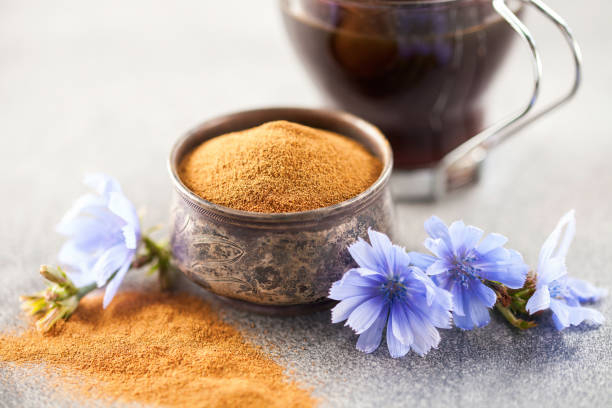
Chicory coffee 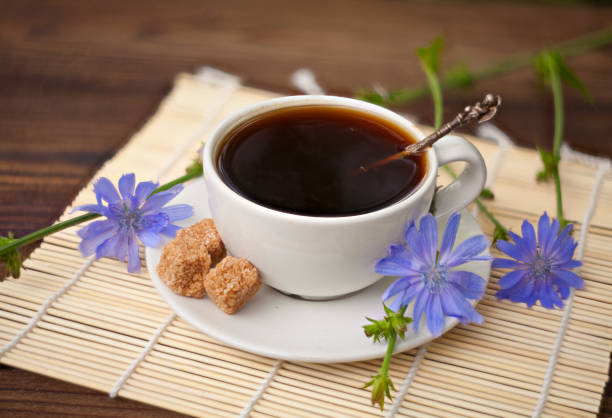
Chicory coffee -
The Camellia sinensis plant's leaves are steamed, dried, and ground into a fine powder to create matcha, a form of green tea. You drink the whole leaf, as opposed to brewing green tea. Epigallocatechin gallate (EGCG), in particular, is a significantly more concentrated source of antioxidants as a result. EGCG is responsible for a large number of matcha's alleged advantages. For instance, observational studies indicate that frequently consuming green tea may lower your chance of developing high blood pressure. Additionally, green tea has been linked to decreased weight, body fat, and a lower risk of type 2 diabetes. The flavor of matcha is described as being earthy and fresh.
To prepare:
- Sift 1–2 teaspoons of matcha powder into a ceramic bowl using a fine mesh strainer.
- Add hot, but not boiling, water — the water temperature should be around 160–170°F (71–77°C).
- Stir slowly until the powder is dissolved, then whisk back and forth. A traditional bamboo tea whisk, called a chasen, works best.
- The tea is ready once a light froth forms. You can also try adding 1 cup (237 ml) of steamed milk or a non-dairy alternative for a creamy matcha tea latte.
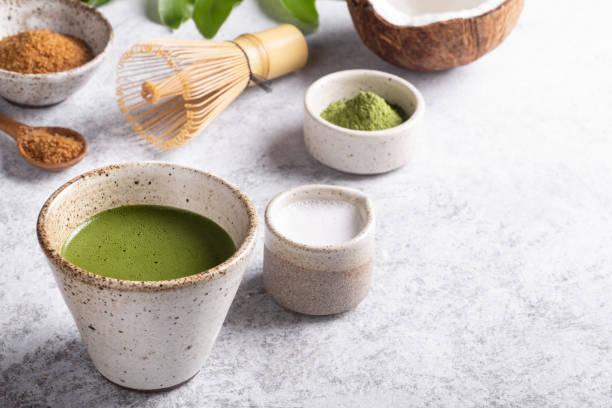
Matcha tea 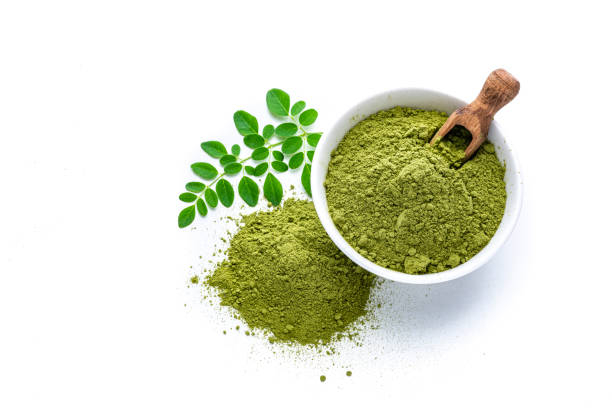
Matcha tea -
A delicious, caffeine-free alternative to coffee is golden milk. Invigorating spices including ginger, cinnamon, turmeric, and black pepper are used in this hot beverage. Cardamom, vanilla, and honey are among more typical additives. Due to the strong chemical curcumin, turmeric may have substantial anti-inflammatory benefits in addition to giving your beverage a lovely golden hue. Additionally, both fat and black pepper help your body absorb curcumin more readily. As a result, you might want to think about using full milk instead of fat-free for this beverage.
You can prepare basic golden milk in about 5 minutes. Here’s how:
- In a saucepan, combine 1 cup (237 ml) of milk or a non-dairy alternative with 1/2 teaspoon of ground turmeric, 1/4 teaspoon of cinnamon, 1/8 teaspoon of ground ginger, and a pinch of black pepper. Optionally, add honey to taste.
- Warm the mixture on low to medium heat, stirring frequently to avoid burning.
- Once heated, pour the drink into a mug and enjoy.

Golden milk 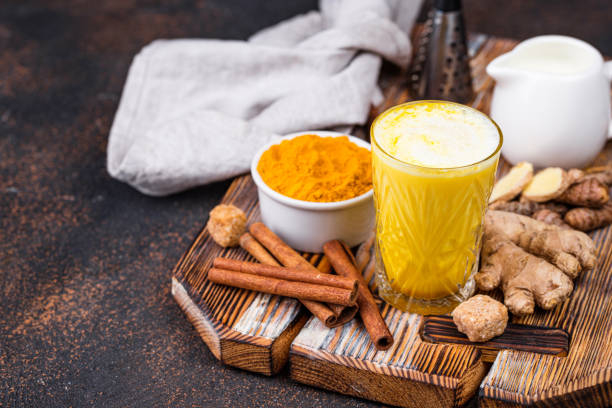
Golden milk -
It need not be difficult to switch up your morning brew. A wonderful way to start the day is with lemon water. It has no calories or caffeine and offers a good amount of vitamin C. Vitamin C functions as an antioxidant, supporting your immune system and protecting your skin from UV ray damage. It's necessary for the production of collagen, a protein that gives your skin, tendons, and ligaments their fundamental structure.
10% of your RDI for vitamin C is provided by only one glass of lemon water, which is made by mixing 1 tablespoon (15 ml) of lemon juice with 1 cup (237 ml) of cold water. For a variety of tastes, you may also add various fruits and herbs; common choices include cucumbers, mint, watermelon, and basil.

Lemon water 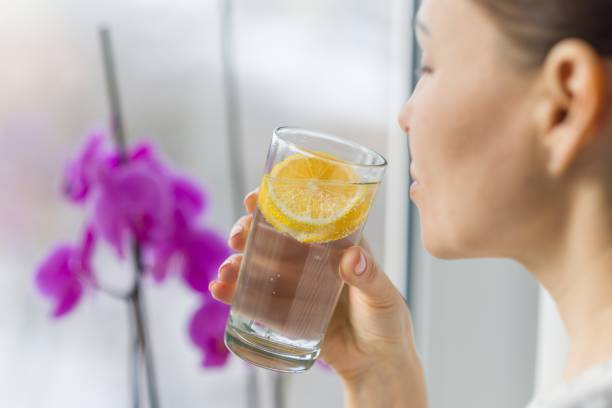
Lemon water -
The dried leaves of the South American holly tree, llex paraguriensis, are used to make yerba mate, a herbal drink that contains natural caffeine. Yerba mate is a wonderful option if you want to replace coffee but don't want to give up your daily caffeine. The amount of caffeine in one cup (237 ml) is around 78 mg, which is comparable to the amount in one cup of coffee on average. Additionally rich in beneficial plant substances that function as antioxidants are yerba mate. In fact, according to some research, it may contain more antioxidants than green tea. It also includes a number of vitamins and minerals, including calcium, iron, phosphorus, riboflavin, thiamine, and vitamins C and E. It has an acquired flavor that may be characterized as smoky or bitter.
Yerba mate is traditionally produced in a yerba mate gourd and eaten with a metal straw while being diluted with water. You may also buy yerba mate tea bags or steep the leaves in a tea ball to make yerba mate sipping simpler. Simply immerse the leaves in hot water for 3 to 5 minutes and enjoy under these circumstances. Despite yerba mate's alleged health advantages, you should only consume it seldom. Studies have connected high, frequent intakes of 1-2 liters per day with an uptick in several cancer forms.
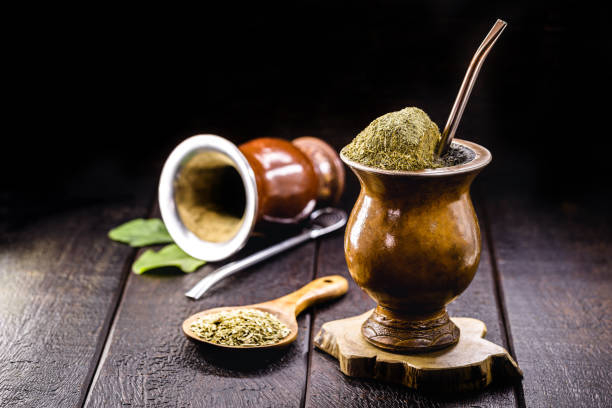
Yerba mate 
Yerba mate -
Black tea that has been flavored with potent herbs and spices is known as chai tea. Although black tea has 48 mg less caffeine than coffee, research shows that it can nevertheless increase mental alertness. The Camellia sinensis plant is used to manufacture both black and green tea, but black tea goes through a fermentation process that alters its chemical composition. Both kinds appear to have potent antioxidant qualities. Some observational studies have connected drinking black tea with a decreased risk of heart disease, while the additional study is required. Chai tea has a strong taste and a calming aroma in addition to its possible health advantages.
There are many recipes, but here is one simple way to prepare 2 cups from scratch:
- Crush 4 cardamom seeds, 4 cloves, and 2 black peppercorns.
- In a saucepan, combine 2 cups (474 ml) of filtered water, a 1-inch (3 cm) slice of fresh ginger, 1 cinnamon stick, and the crushed spices.
- Bring the mixture to a boil, then remove from heat.
- Add 2 single-serving black tea bags and let steep for 10 minutes.
- Strain the tea into two mugs and enjoy.
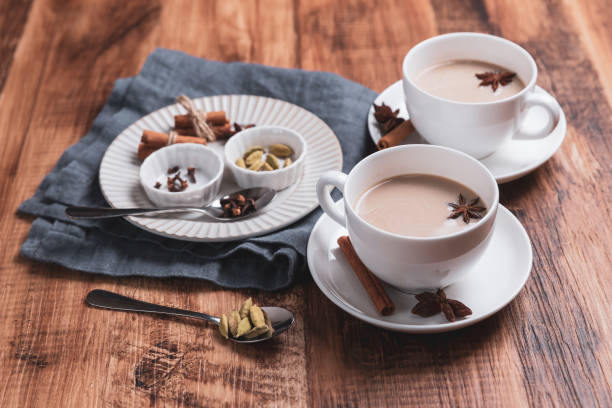
Chai tea 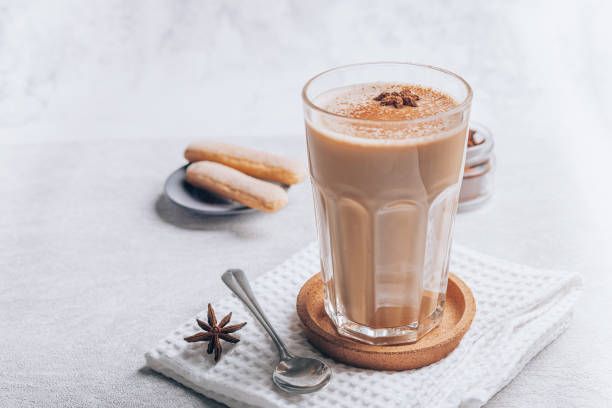
Chai tea -
South Africa gave birth to the caffeine-free beverage known as Rooibos or red tea. In contrast to coffee and other teas, rooibos has a low concentration of tannin antioxidants, which can be advantageous but can potentially obstruct the absorption of iron. Rooibos has a high concentration of other antioxidants despite having little tannin. There have been very few studies. One test-tube research revealed promise for rooibos to lower cancer risk, while another found potential for rooibos to protect against heart disease.
Rooibos steeps for a longer period of time than other teas, and over-steeping has no bitter flavor. Instead, rooibos tastes fruity and somewhat sweet. Use a tea filter to steep 1-1.5 teaspoons of loose rooibos for up to 10 minutes to make a cup for yourself. You can, at your discretion, add honey and lemon.
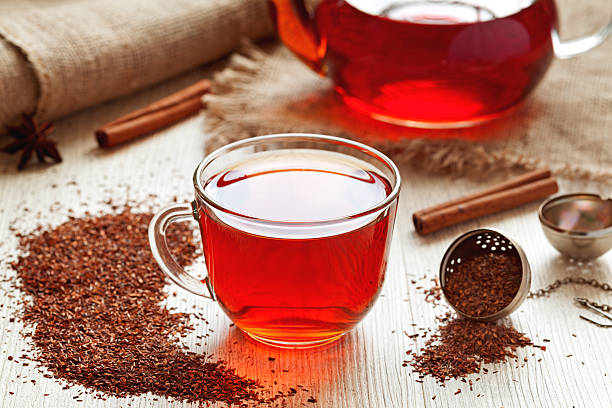
Rooibos tea 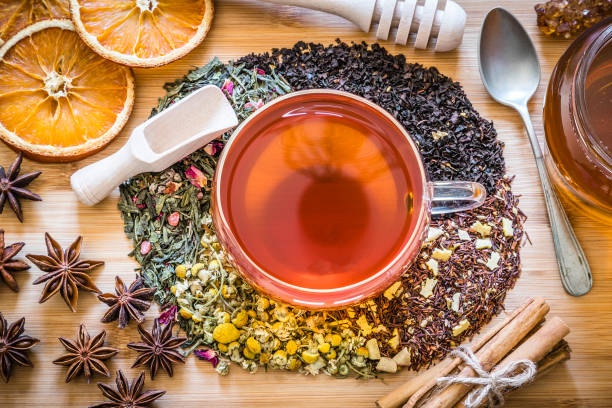
Rooibos tea -
By utilizing yeast and bacteria to ferment smashed apples, apple cider vinegar (ACV) is created. Acetic acid, a product of this process, has been shown in certain studies to have positive effects on blood sugar levels and insulin sensitivity. For instance, one research discovered that consuming 20 grams (0.5 teaspoons) of ACV before a meal significantly lowered the rise in blood sugar levels in individuals with insulin resistance. However, type 2 diabetics did not experience this impact.
ACV may also boost feelings of fullness after meals and help with little weight reduction, however, there isn't much research to support this currently. A cup (237 ml) of cold water, 1-2 teaspoons of honey, or any desired sweetener, and 1-2 tablespoons of raw or unfiltered apple cider vinegar are the components of a basic AVC beverage. Never consume ACV without first diluting it. The 4-6% acetic acid in ACV has the potential to irritate your mouth and throat. Regular usage can also erode dental enamel, thus it's advised to rinse with water both before and after consuming ACV.
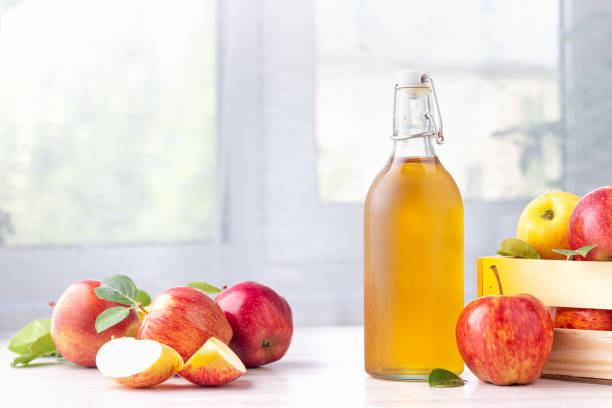
Apple cider vinegar 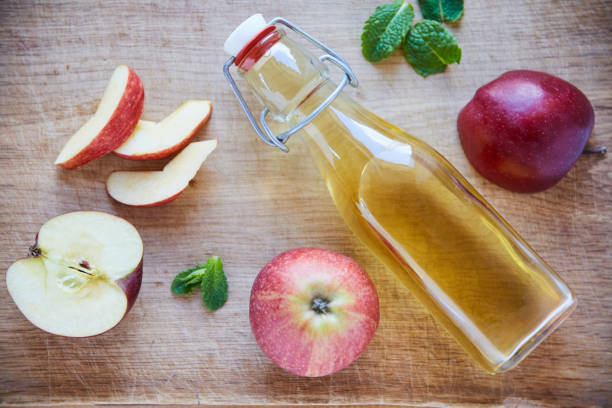
Apple cider vinegar -
Black tea is fermented with bacteria, yeast, and sugar to create kombucha. A SCOBY, or symbiotic colony of bacteria and yeast, is produced during the fermentation process. Probiotics, acetic acid, and antioxidants are all present in kombucha after fermentation, and they may all have health advantages.
Studies on animals and in the lab reveal that kombucha may enhance blood sugar levels in diabetics, cholesterol levels, and the immune system. The reported health advantages in people, however, are mostly anecdotal. Since there is a significant chance that your homemade kombucha may be contaminated with dangerous microorganisms, it is not advised. There are several commercially available types, though, that doesn't carry the same amount of risk.
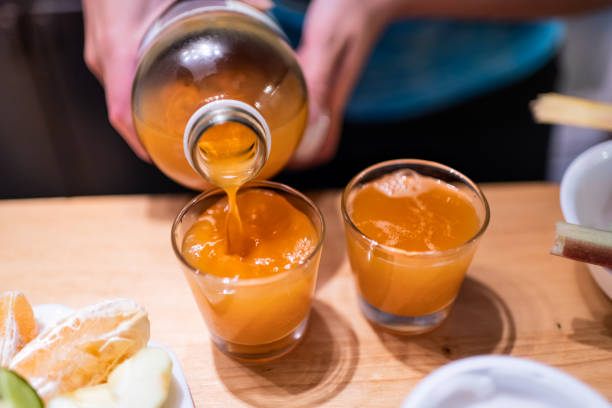
Kombucha 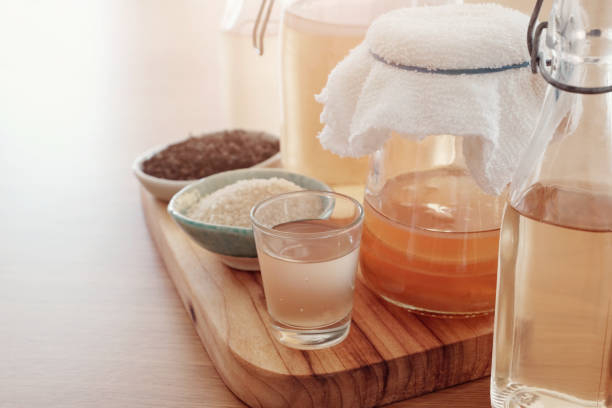
Kombucha











